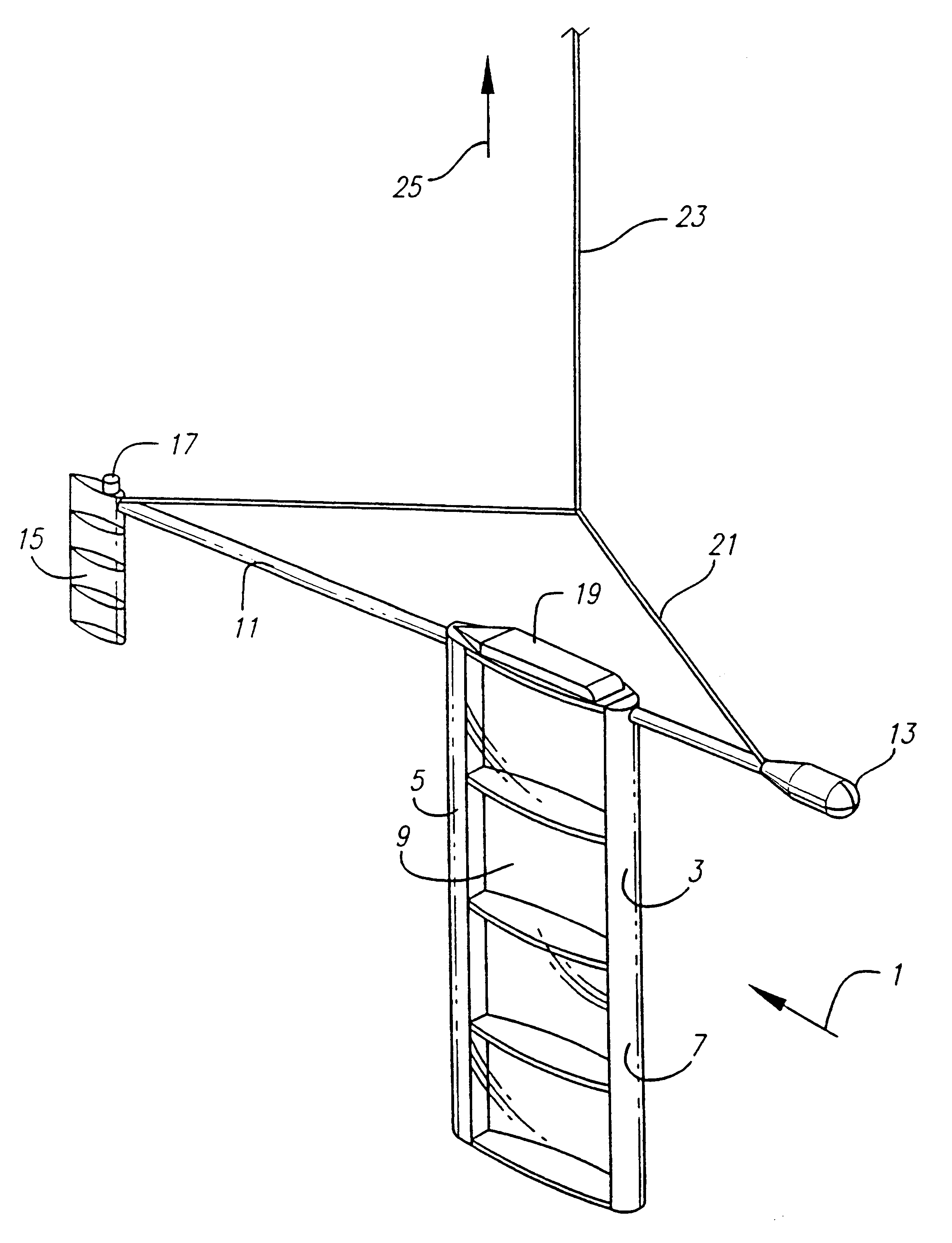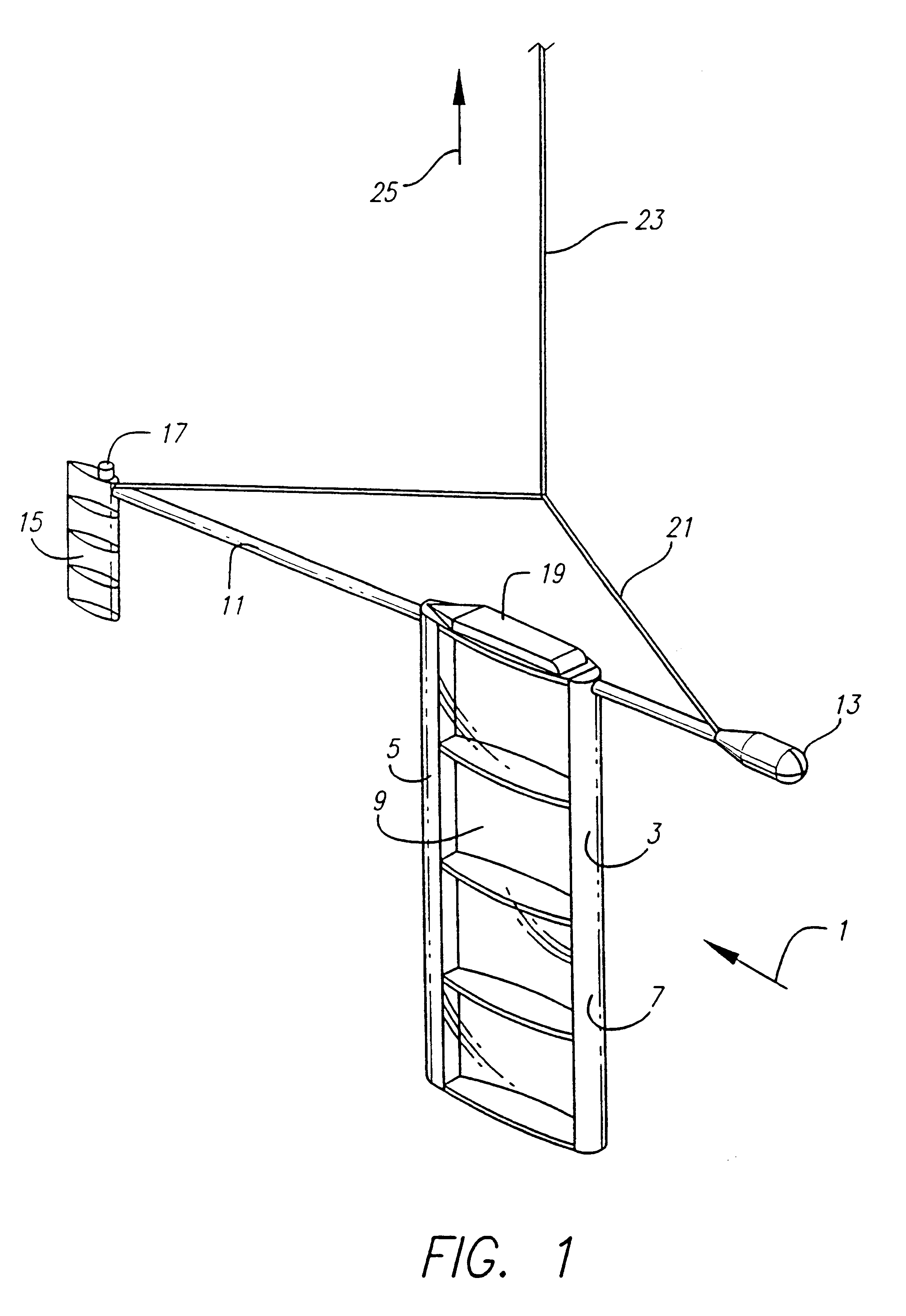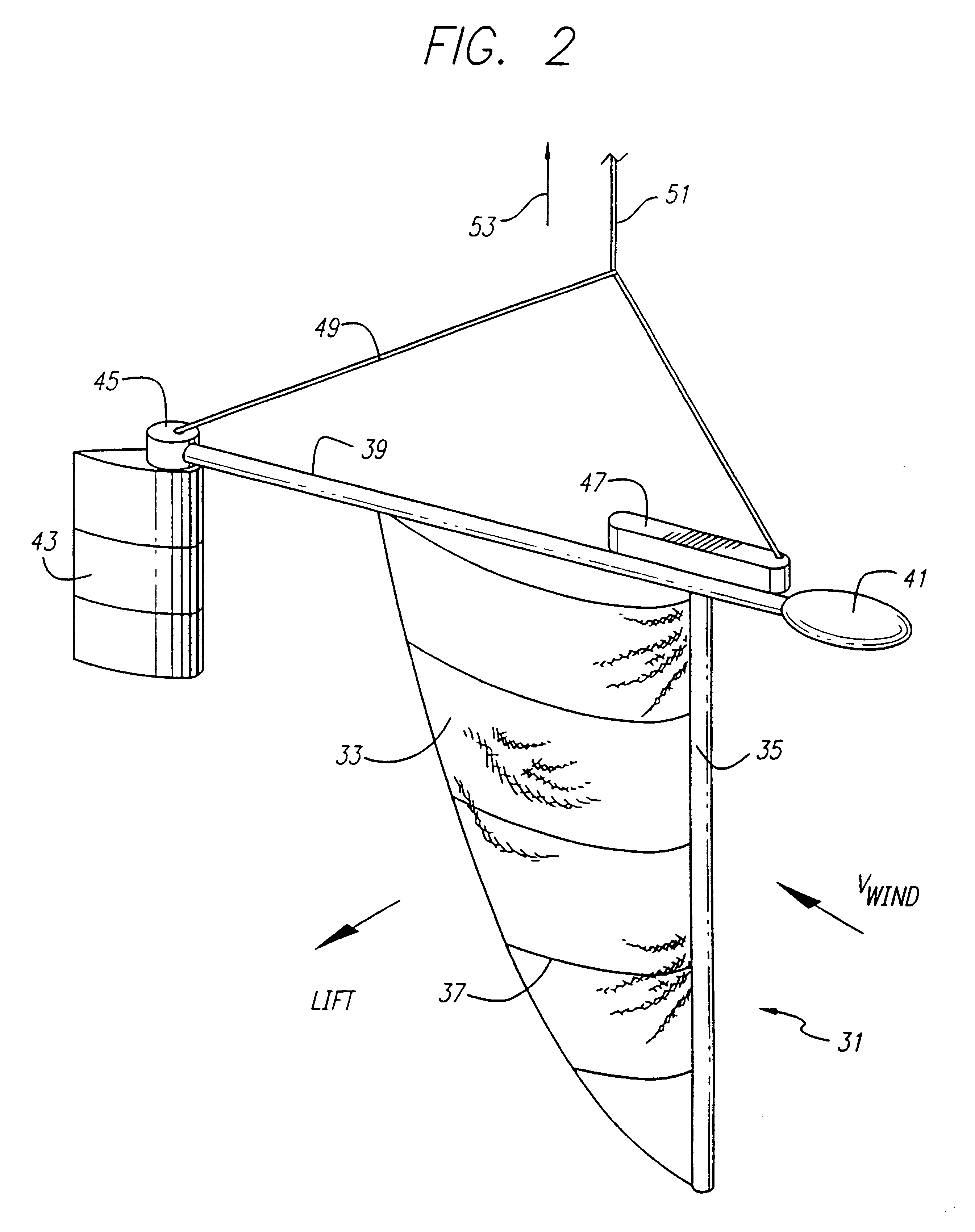Balloon trajectory control system
a control system and balloon technology, applied in the direction of lighter-than-air aircraft, transportation and packaging, weapons, etc., can solve the problems of large power requirements for propellers, restricted attainable altitude and payload masses of airships, and inability to achieve significant power for balloon systems
- Summary
- Abstract
- Description
- Claims
- Application Information
AI Technical Summary
Benefits of technology
Problems solved by technology
Method used
Image
Examples
second embodiment
a balloon trajectory control device is shown in FIG. 2. The main lift-generating element 31 is shown comprising an inverted sail 33, a mast 35, and a plurality of battens 37. The sail 33 and mast 35 are attached to a boom 39 having a front end and a back end. A counterweight 41 is attached to the front end of the boom. A rudder 43 and rudder actuator 45 are attached to back end of the boom. A control module 41 is mounted at a convenient location. The control module 41 includes a power source (not shown), if required, comprising a battery and a solar panel. A yoke 49 connects the boom to a tether 51. The upper end of the tether is attached to a winch 53 (not shown) mounted to an LTA system (e.g. a gondola of a balloon).
The operation of the sail version of the trajectory control device is very similar to the operation of the wing version (FIG. 1). The use of a sail rather than a double-sided airfoil section is expected to have somewhat less efficient aerodynamic performance. However, ...
third embodiment
a trajectory control device is shown in FIG. 3. In this embodiment, the stabilizing surface is placed ahead of the main lifting surface. When used on an aircraft, the small forward stabilizer is called a canard and the arrangement is referred to as a canard configuration.
The operation of the canard configuration is very similar to the operation of the preferred embodiment with its conventional arrangement (stabilizer behind the main wing). Although the canard configuration looks unstable, the requirement that the center of gravity be ahead of the neutral point is identical to that of the conventional configuration.
fourth embodiment
a trajectory control device is shown in FIG. 4. In this embodiment, a biplane arrangement is used for the main lifting generating element. It is shown with a conventional arrangement with the stabilizer behind the main wings.
The operation of the device with a biplane (or triplane, or more) is identical to the operation with a single wing. An advantage of this configuration is structural: the box-like structure has inherently greater stiffness than for a monoplane. Similarly, the rudder could comprise multiple surfaces as well.
PUM
 Login to View More
Login to View More Abstract
Description
Claims
Application Information
 Login to View More
Login to View More - R&D
- Intellectual Property
- Life Sciences
- Materials
- Tech Scout
- Unparalleled Data Quality
- Higher Quality Content
- 60% Fewer Hallucinations
Browse by: Latest US Patents, China's latest patents, Technical Efficacy Thesaurus, Application Domain, Technology Topic, Popular Technical Reports.
© 2025 PatSnap. All rights reserved.Legal|Privacy policy|Modern Slavery Act Transparency Statement|Sitemap|About US| Contact US: help@patsnap.com



